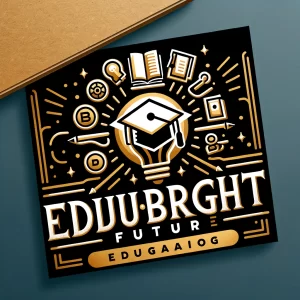The digital revolution has profoundly transformed education, introducing a myriad of technologies that have both challenged and enhanced the way teaching and learning occur. Today, educational technology is not just a tool but a fundamental part of engaging students and improving learning outcomes. This shift is redefining traditional educational paradigms and preparing students for a future dominated by digital proficiency.
Evolving Classrooms
Traditional classrooms, once characterized by rows of desks, chalkboards, and textbook-based learning, have evolved into dynamic learning environments equipped with smart boards, tablets, and access to a global information database—the internet. These tools have made learning interactive and infinitely more accessible. The modern classroom is a versatile space where technology enables diverse learning activities and styles, accommodating the unique needs of each student.
Interactive Learning Environments
Smartboards and interactive displays replace traditional chalkboards, offering a more engaging and versatile approach to presenting information. Tablets and laptops provide students with instant access to a wealth of online resources, enabling research and learning beyond the confines of the classroom. This integration of technology facilitates a blended learning environment, combining the best aspects of traditional instruction with innovative digital tools.
Enhancing Engagement with Technology
One of the most significant advantages of educational technology is its ability to increase student engagement. Interactive apps, learning games, and virtual simulations capture the attention of students and provide practical learning experiences that textbooks cannot match. Technology also caters to various learning styles and speeds, allowing personalized education plans that cater to the needs of individual students.
Personalized Learning Experiences
Educational technology enables personalized learning experiences by adapting to the individual needs of students. Adaptive learning platforms use algorithms to assess a student’s strengths and weaknesses, tailoring content to their specific learning pace and style. This personalized approach helps students grasp complex concepts more effectively and retain information longer.
Gamification and Virtual Reality
Gamification, the use of game-like elements in non-game contexts, motivates students by making learning fun and engaging. Virtual reality (VR) and augmented reality (AR) provide immersive experiences that bring subjects to life, whether it’s exploring ancient civilizations or conducting virtual science experiments. These technologies not only enhance understanding but also foster a deeper interest in the subject matter.
Technology and Teacher Roles
With the advent of technology, the role of teachers has also shifted. Educators now act more as guides and facilitators of knowledge rather than the sole sources of information. They curate digital resources and integrate technology into lesson plans to enhance the educational experience and support students’ self-directed learning.
Facilitators of Knowledge
Teachers use technology to provide students with a diverse array of learning materials, from online videos and articles to interactive simulations and digital textbooks. This shift allows teachers to focus more on guiding students through the learning process, fostering critical thinking, and encouraging collaboration.
Professional Development
The integration of technology in education necessitates ongoing professional development for teachers. Educators must stay abreast of new tools and techniques to effectively incorporate technology into their teaching. This professional development ensures that teachers can maximize the potential of educational technology to benefit their students.
Data-Driven Education
Technology enables the collection and analysis of data on student performance in real-time. This capability allows educators to adjust teaching strategies and interventions more accurately and timely, ensuring that every student can achieve their potential.
Real-Time Feedback and Assessment
Digital assessment tools provide immediate feedback to students, helping them understand their progress and areas for improvement. Teachers can monitor student performance through data dashboards, identifying trends and making data-driven decisions to enhance instruction. This real-time feedback loop supports a more responsive and effective educational environment.
Predictive Analytics
Predictive analytics use historical data to forecast future performance and identify students at risk of falling behind. By anticipating potential challenges, educators can proactively implement interventions to support struggling students, improving overall educational outcomes.
Preparing for a Digital Future
As we prepare students for a workforce that will inevitably require digital literacy, educational technology not only facilitates an engaging learning environment but also develops essential future skills. Problem-solving, critical thinking, and collaboration are all enhanced through technology-driven learning tasks.
Digital Literacy
Digital literacy encompasses a range of skills, including the ability to use digital tools effectively, understand digital content critically, and create digital media. Incorporating these skills into the curriculum ensures that students are well-prepared for the demands of the modern workplace.
Collaboration and Communication
Technology fosters collaboration by enabling students to work together on projects, regardless of their physical location. Collaborative tools like shared documents, online discussion boards, and video conferencing platforms help students develop teamwork and communication skills essential for their future careers.
Challenges and Considerations
Despite its benefits, the integration of technology in education comes with challenges. Issues such as digital equity and the potential for technology to distract are concerns that educators must address. Additionally, training teachers to use these tools effectively remains a crucial component of successful technology integration.
Digital Equity
Ensuring that all students have access to the necessary technology is a significant challenge. Disparities in access to devices and high-speed internet can exacerbate educational inequalities. Schools and policymakers must work to provide equitable access to technology for all students, regardless of their socioeconomic background.
Managing Distractions
While technology can enhance learning, it can also introduce distractions. Educators must establish clear guidelines and strategies to minimize off-task behavior and ensure that technology is used productively. This may include implementing software that limits access to non-educational websites during school hours.
Conclusion
Educational technology has indisputably become a cornerstone of modern education. By embracing these tools, schools are not only enhancing educational outcomes but are also providing students with the skills necessary to excel in a digital world. The ongoing evolution of educational technology promises to bring even more innovative solutions to the classroom, further transforming teaching and learning. As we navigate this digital revolution, it is essential to balance the benefits of technology with thoughtful implementation and equitable access, ensuring that all students can thrive in the modern educational landscape.
